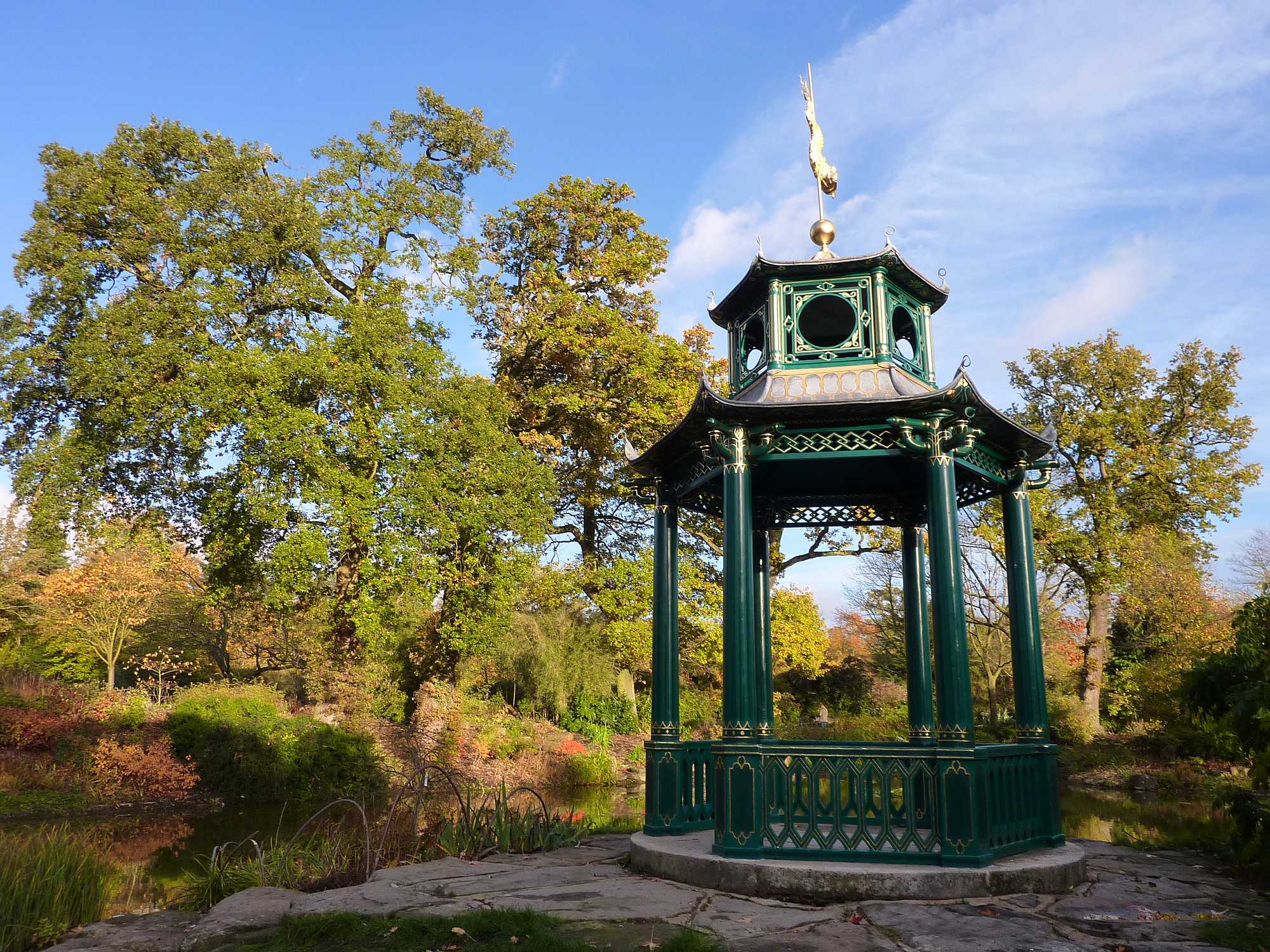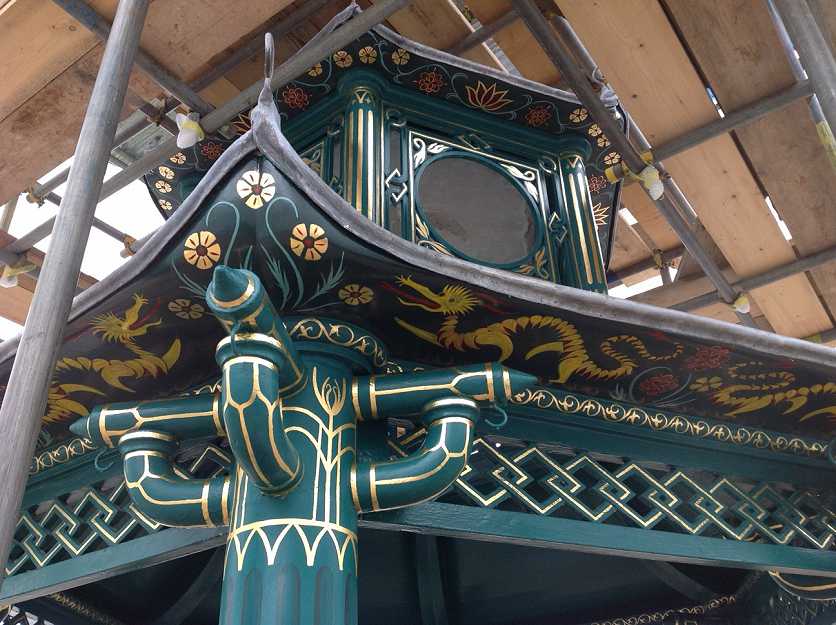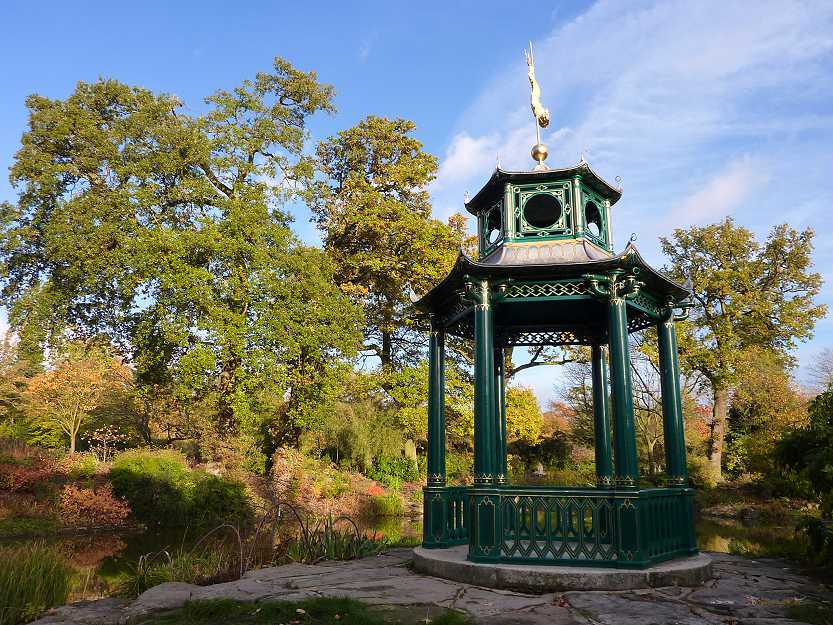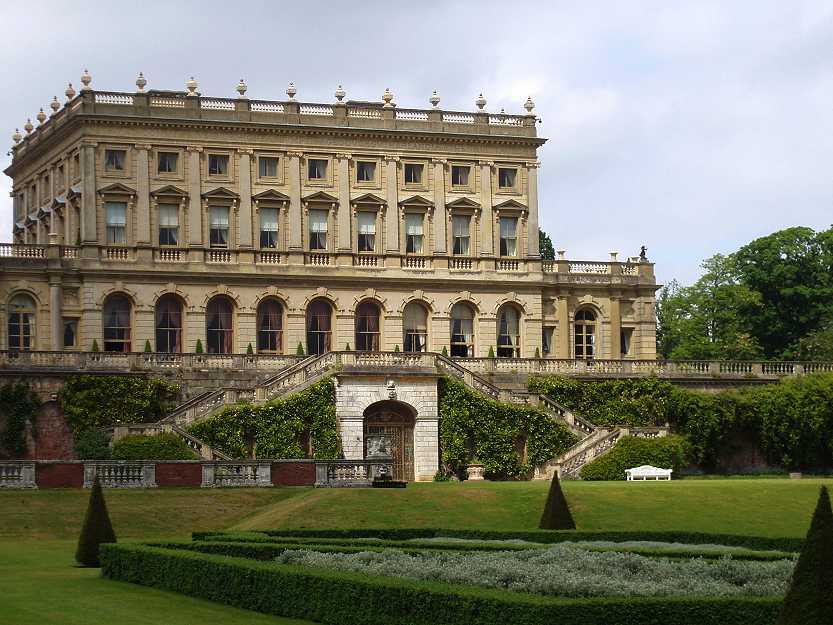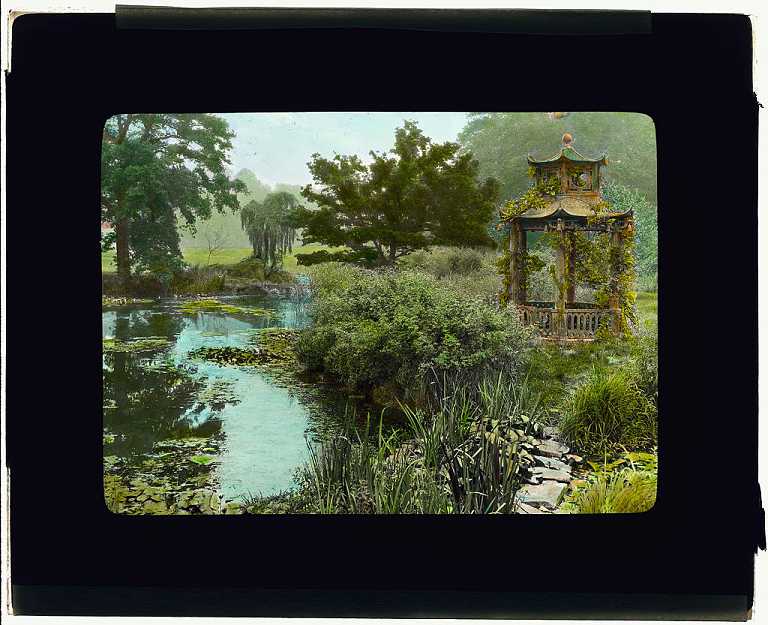
The National Trust commissioned Lisa Oestreicher to undertake paint research on the Chinese Pagoda located in the Water Garden at Cliveden in preparation for its conservation and redecoration. She has also been involved in paint investigations on the South Terrace at Cliveden as part of the Trust’s recently completed restoration of this important Classical elevation.
Cliveden
Cliveden is a Grade I listed country house designed by Sir Charles Barry for the Duke of Sutherland in the 1850s. Sited within its gardens is the Chinese Pagoda, a hexagonal structure with columns, decorative latticework and two wooden roofs surmounted by a finial in the shape of a sea monster. Internally, it originally boasted six floral canvas paintings and one central trompe l’oeil scene. The Pagoda was first constructed for the Exposition Universelle held in Paris in 1867. Afterwards, it was purchased by the 4th Marquess of Hertford and re-erected in the grounds of Bagatelle, his chateau in the Bois de Boulogne on the outskirts of Paris. In 1900 the Pagoda was bought by Lord Astor and moved to Cliveden where it forms a delightful focal point within the Water Garden. It has now been conserved and redecorated using a historic colour scheme identified in Lisa Oestreicher’s paint research.
